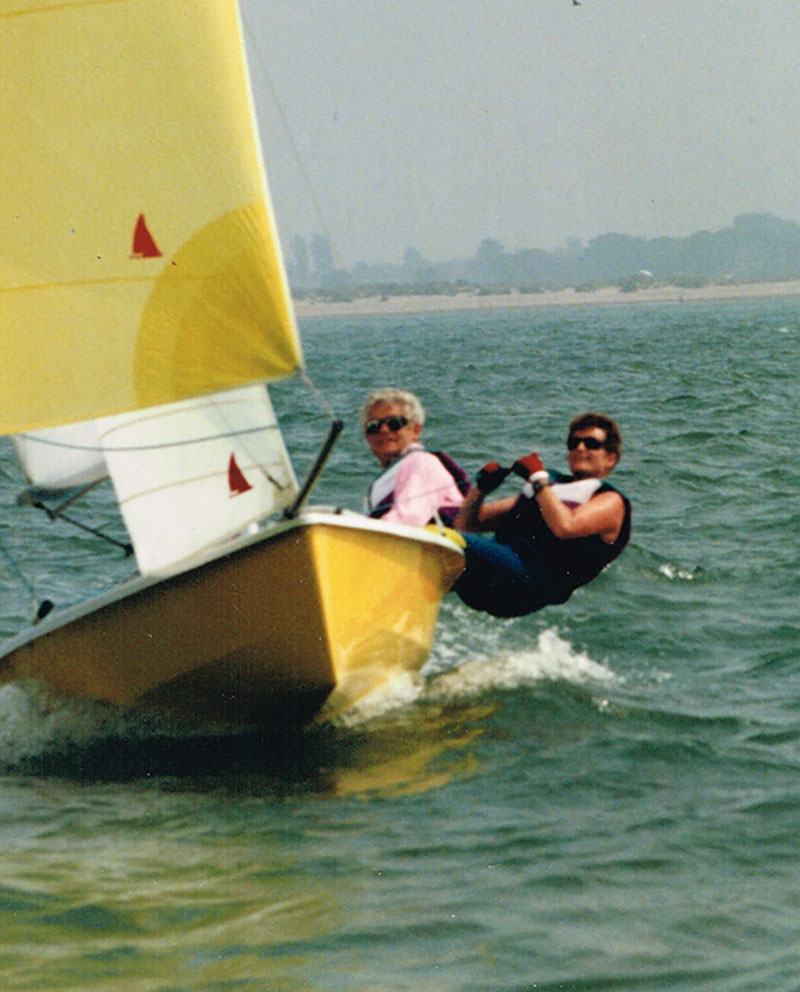Life: a series of stories.
It took me a while to realise, when providing carers with a chart of Geoff’s needs and preferences, that what I was actually doing was asking them to hear his story. It was more than just letting them know he needed help to brush his teeth or that he drank his tea black, it was painting a picture of the man he used to be (and still was), bringing to life someone whose identity was otherwise reduced to ‘care home resident with dementia needing to be washed, dressed and fed’.
Geoff was my late husband. I’d cared for him at home for about five years but as his dementia progressed he’d had to move to a care home for what turned out to be the final thirteen months of his life. Seeing how the people caring for him knew nothing about him, I created a wall chart to share the things I was confident he’d have talked about if he’d been able.
I quickly saw the impact on staff.
On the day I pinned that Care Chart to his bedroom wall in the care home, a rather brusque carer bustled in whilst I was there, took a look, turned to Geoff and exclaimed, “I never realised you had seven grandchildren, Geoff, well I never!” She was rewarded with a big beaming smile; Geoff’s ability to communicate in conventional ways had all but disappeared, but he’d perk up at any mention of his beloved children and grandchildren. And for that carer he had shifted from being a list of tasks to a human being with a past, a life filled with people, experiences, stories… just like the rest of us.
The care home manager saw the chart’s potential and asked for more for her other residents. I had one of those light bulb moments, realising that this simple tool had the power to transform the experience of care for thousands of other people in Geoff’s position. We ran a trial, changed a few things and variations of that original chart went on to be adopted by over 1,400 care homes throughout the UK.
I had more to learn about storytelling. In those early days I spent a lot of time speaking at conferences and other events for health and social care professionals. I believed that what I needed to do to convince them to adopt the care charts was to demonstrate their potential to reduce costs, by enabling staff to provide a more efficient level of service. I painstakingly compiled cost benefit ratios and statistics from around the world to provide evidence of the benefits of person-centred care for both carer and the cared-for.
The statistics had their place, but of much greater impact was the story. I’d bring up Geoff’s image on the screen and it was as if everything in the room intensified, the politely quiet audience became totally silent. Where people might have been multi-tasking, one ear on the presentation whilst they checked their emails, they looked up and focused, phones briefly forgotten.
I left Geoff’s picture in place whilst I recounted his story, the five years of caring for him at home, the causes of his heartbreakingly rapid decline and his experiences of stays in hospitals and care homes.
I would love to say that it’s my skills as a raconteur that held people’s attention but the truth is much simpler. We human beings have an emotional response to stories that just doesn’t happen when faced with a list of bullet points and pie charts. We use stories to make sense of the world. We remember stories in a way that we utterly fail to do with facts and figures and we are more likely to change our behaviour through hearing about a single person’s experience than being informed of statistics that relate to thousands of people.
Science certainly supports this idea: “One of the biggest mysteries of neuroscience is how we create meaning out of the world. Stories are deep-rooted in the core of our nature and help us create this meaning,” said Jonas Kaplan, corresponding author at the Brain and Creativity Institute and an assistant professor of psychology at USC Dornsife, in response to a USC study that suggests exposure to narrative storytelling can have a widespread effect on triggering better self-awareness and empathy for others. (Science Daily, Oct 5 2017).
Stories move us, make us want to know what happened, make us care. Consider Margaret Keenan, 91 years old and living in Coventry. She undoubtedly has a great number of stories to tell from her long life, but the one for which she will be remembered is as the first person to be vaccinated against Covid-19. As for the other 800,000 ish people to have received their first jab by that Christmas Eve, as a statistic they fail to move us, but Margaret has become a symbol of the turning point in our relationship with a disease that had turned so many lives upside down. In the Science Museum is not only the vial of the vaccine administered to Margaret, but also the iconic charity t-shirt she wore to receive it and the uniform May Parsons, NHS Matron, wore to give it.
The power of story means we care more about one person than the 800,000 we know nothing about. The human mind does indeed, as the famous quote goes, work in mysterious ways.

Photo of Zoe and Geoff sailing
